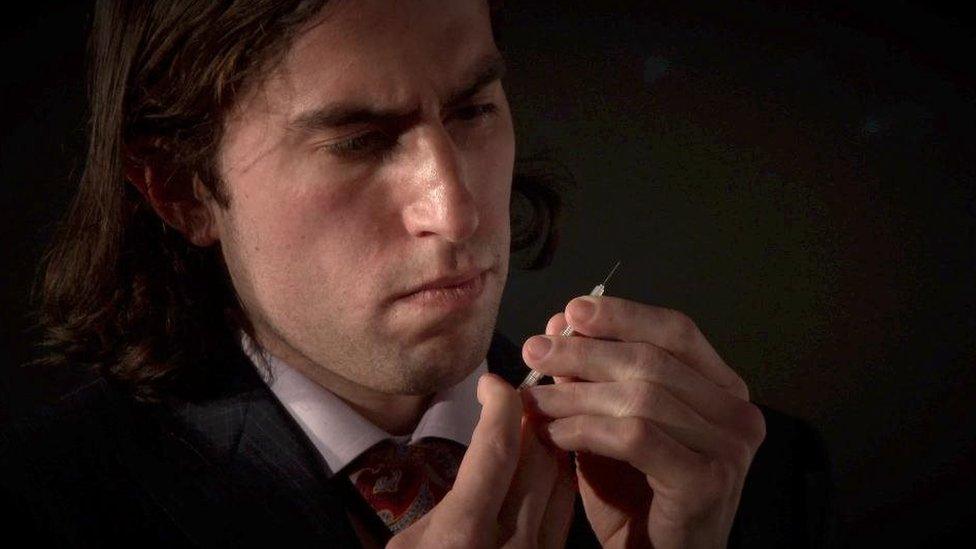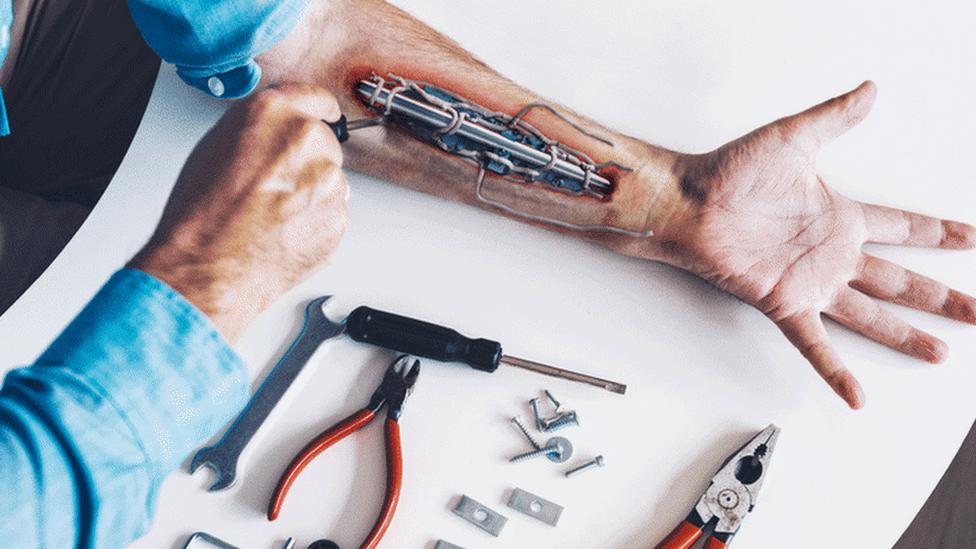Biohacker Aaron Traywick found dead in a spa
- Published

Controversial bodyhacker Aaron Traywick has been found dead
A biohacker who became infamous after apparently injecting himself with an untested herpes drug in front of an audience has been found dead.
Aaron Traywick's body had been discovered in a spa room in Washington DC on Sunday, local police said.
Vice News, external reported that Traywick had been using a flotation therapy tank.
The 28-year-old was chief executive of Ascendance Biomedical. He had skirted the law by self-medicating as well as encouraging others to do likewise.
A police spokeswoman has said no evidence has been found to suggest foul play.
Traywick had claimed his biohacking company had developed a DIY "research compound" that could cure HIV, Aids and herpes, but had no independent proof to back this up.
Biohacking refers to people's efforts to alter their own biology by a variety of means including lifestyle and diet changes, surgery and the use of unlicensed therapies.
The BBC challenged Traywick over his behaviour when it interviewed him at the BodyHacking Con in Austin, Texas, in February.
Traywick, who had herpes, had performed a stunt at the event, apparently injecting his company's unregulated product into his leg.
On stage, he had referred to the product as a "research compound".
But in conversation with the BBC he described it as a "treatment" - a claim that had the potential to attract the attention of the US Food and Drug Administration.
WATCH: The BBC's Dave Lee met with Aaron Traywick during the BodyHacking Con
Traywick told the BBC he had plans to take his work to Venezuela.
When questioned whether it was ethical to encourage sick people to effectively act as guinea pigs, Traywick responded: "The best we can do is we can say to these people, 'We know you don't have access to this medication.'
"They don't have any other options.
"All we know is that if it works they don't die."
Traywick's work had also caused concern among other members of the body-hacking community.
An autopsy was scheduled to be carried out on Traywick's body, but the results have yet to be disclosed.
- Published8 February 2018
- Published21 November 2017

- Published3 March 2018
